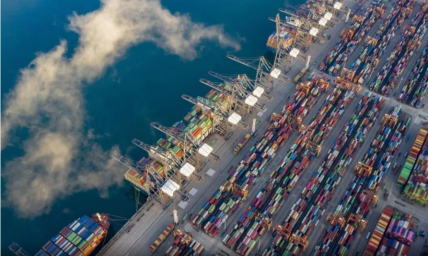Trade pressures have intensified port congestion and delays in Europe, Asia, North America, and other regions. Labor shortages, tariff fluctuations, and supply chain disruptions have plunged global shipping into further uncertainty. Drewry warns that sudden freight rate changes will cause destructive chain reactions, including disruptions, shortages, surpluses, and port congestion.
Drewry’s latest report highlights congestion challenges at major seaports in Northern Europe. Analysis shows that chain reactions at major hub ports such as Bremerhaven, Antwerp, and Hamburg will spread to ports in Asia and the US.
Drewry’s report indicates a significant increase in berth waiting times at major ports. Between late March and mid-May, berth waiting times at Bremerhaven surged 77%; at Antwerp, waiting times extended from 32 hours in Week 13 to 44 hours in Week 20, a 37% increase; and at Hamburg, waiting times spiked from 34 hours to 50 hours, a 49% increase.
These delays primarily stem from labor shortages and historic low water levels in the Rhine River, which severely hinder barge transport to inland destinations, further exacerbating port congestion.
To mitigate the impact of delays on voyages, Danish shipping giant Maersk has taken emergency measures, including temporarily adjusting routes, such as extending its AE5 route from Bremerhaven to Northern European terminals. However, Rotterdam, typically one of the early call ports on the route, now faces delays, somewhat diminishing the advantages of diverting to other ports. In this context, Mediterranean ports occasionally serve as alternatives to avoid transport bottlenecks when shipping goods from Northern Europe to regions like Austria and Switzerland. However, with the Red Sea situation still unclear, shipping companies have had to continue taking the longer route around Africa.
The “ripple effect” of port congestion and delays has also extended beyond Europe. Fluctuations in US tariff policies have added extra pressure to global supply chains. The previous temporary cancellation of tariffs on Chinese imports by the US led to a surge in shipping demand between China and the US, triggering congestion at major US ports.
Drewry’s report notes that since late April, the number of container ships waiting to berth in Shenzhen, Los Angeles, and New York has steadily increased. According to Drewry’s container capacity tracking data, between Week 16 and Week 20, the number of ships waiting in Shenzhen jumped from 17 to 31; the number of waiting ships at the Los Angeles/Long Beach port complex more than doubled, from 17 to 42.
Increased delays have disrupted Enterprise inventory plans, forcing shippers to add extra inventory, further straining supply chains. The surge in trans-Pacific route demand has raised concerns about congestion and cargo bottlenecks at major US ports. On the 27th, many shipping companies began resuming previously canceled voyages and launching new services to capitalize on the sudden surge in demand following the 90-day tariff reduction announcement.
Container market analyst Bremer point out that given the sharp drop in US imports, the sudden return of extra loaded ships and temporary cargo is likely to cause port congestion and operational issues. Philip Damas, Managing Director of Drewry, a supply chain consulting firm, said Drewry has warned importers that if all shippers increase pre-loading, they must plan for difficult operational and transportation conditions. The liquidity of supply chains in the maritime sector relies on relatively stable and predictable traffic volumes and visibility into future product flows, but sudden freight rate changes can trigger destructive chain reactions, including disruptions, shortages, surpluses, and port congestion. He added that the impact of sudden changes in demand and capacity can be seen in the number of container ships waiting outside major ports.
In fact, Sea Intelligence points out that US West Coast ports may face particularly high pressure as shipping companies shift capacity to trans-Pacific trade and favor services calling there. In the 10 weeks from May 26 to July 28, shipping companies injected 5% more capacity into the West Coast in just the past week, while East Coast capacity injection was slightly negative. CEO Alan Murphy explained that this discrepancy may indicate two different root causes, or both may exist simultaneously. On the one hand, the surge in freight volume may be more concentrated on the West Coast, driven by shippers eager to get goods to the US as quickly as possible; on the other hand, it may be due to vessel availability, as carriers need more time to deploy suitable ships to the East Coast.





